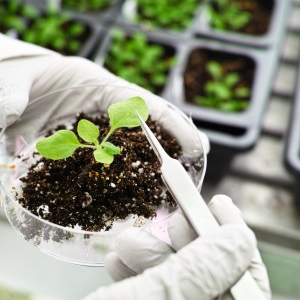
The Nagoya Protocol is highly relevant for the Dutch seed culture sector. But the content of the protocol is far from easy to understand. V.O. summarises the main provisions for you and the most important consequences.
1. In a nutshell
The Nagoya Protocol is derived from the 1993 Convention on Biological Diversity, one of the cornerstones of which is “the fair and equitable sharing of benefits arising out of the utilization of genetic resources (GR)”. The cornerstone was established in order to prevent GR from being obtained from a country of origin without that country deriving any benefit. The protocol further elaborates this cornerstone and applies to all GR (with the exception of human genetic material) that is researched and developed. The protocol states that the user is required to share benefits that result from the use of genetic material with the country of origin, if the country of origin so requires. The country of origin can itself determine if and how it imposes this requirement on users. As a result there are many differences in the requirements which countries set. In the meantime, the Nagoya Protocol has also been implemented through European legislation in European Union member states.
2. Why is it important for Dutch businesses?
In the Netherlands, GR are extensively used, for example in the seed culture sector. Under the European legislation, users are now required to ask permission from the country of origin, if the land of origin so requires. This requirement comes into effect as soon as a genetic source is used for research and development. In addition, you have to submit a statement of due diligence as soon as you receive a public or private subsidy for research into a genetic source, and when you place a product on the market which uses a genetic resource within the meaning of the Nagoya Protocol.
3. What are the concrete consequences?
Failing to comply with the requirements of the protocol can have serious consequences for your business. The Netherlands Food and Consumer Product Safety Authority can inspect whether your business complies with the Protocol. It differentiates between administrative, mild and severe violations, each category carrying its own sanctions. In the most serious case, a prison sentence can be imposed or a fine of up to €810,000.
4. How should your company or organisation deal with this?
It is particularly important for your business that your administration is in order on time. Register where your genetic source comes from and when you obtained it. Then research whether the protocol applies to you. Next, check whether the country of origin has laws and regulations governing the use of GR and whether you are required to request certain certificates and to negotiate regarding sharing future benefits. You can find a clear step-by-step plan and a flowchart that roughly describes when the protocol applies to you on the website www.absfocalpoint.nl/nl/absfocalpoint/whattodo.htm.
Also read the dossier: ‘The-nagoya-protocol-and-its-impact-on-your-research‘.

